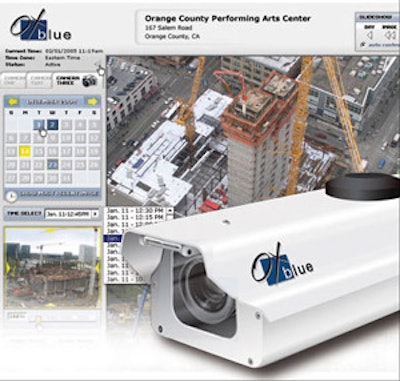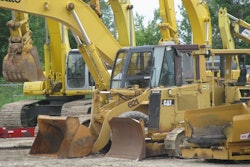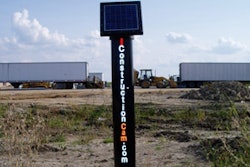
There a number of "teams" and "players" involved in any construction project and keeping all of these people involved is a challenging task. As a contractor, the main responsibility is to build a certain structure in a defined amount of time for a specific amount of money.
This responsibility quickly turns difficult when a question, discrepancy or other problem arises during the project and other team members need to be brought to the site. The problem is, the architect, owner or whoever else is part of the project, doesn't have a trailer next to the general contractor at the site. They are most likely in separate parts of the country.
This is when minor speed bumps turn into major hurdles for the contractor since collaboration with the required parties can take significant time and money to accomplish. To address this potentially inefficient part of the construction process, contractors have begun to implement jobsite cameras that allow users to visually stay up-to-date on the progress of a job and multiple parties can make decisions without having to physically visit the site.
"At no time in history has anyone been able to visit the project without actually standing at the jobsite - being physically there," says Tom Allen, Founder and CEO of iBEAM Construction Cameras. "Now everyone is able to check the progress of the project and make decisions on what's there and how to proceed with the work."
Chandler McCormack, CEO and Co-Founder of OxBlue Construction Webcams adds that "If a structural engineer has to check on the steel, he can see when he has to be out at the jobsite. He will know when the steel is actually up and won't come out before it has been erected or after it has been covered up."
Benefits of Jobsite Cameras
The advantages of utilizing a jobsite camera are generally understood by the construction industry. Until recently the technology had not reached a point that could offer a useable solution. "Imaging and cellular technologies have reached a critical milestone, construction cameras have changed from a cool gadget into a powerful management tool for contractors," says McCormack. "It's allowing everyone involved in the project to stay in sync and that's allowing companies to improve the way they do business."
One of the main technological advancements has been a significant increase in image resolution. Many typical web cameras only are able to produce a resolution adequate for monitoring a point of entry such as a door. But if you want to use a camera as a tool to aid in the management of a project, you need a camera that is able to capture images at a much higher resolution to accurately see the entire project. "Some construction cameras are now able to capture images 40 times higher in resolution than previous technology," says McCormack. "Users went from being able to see the blurry shape of building to being able to account for specific inventory, jobsite progress and weather conditions- a valuable tool on the job."
Because images captured by the camera can be accessed at any time, by any person, the contractor is changing the way he does business around these solutions. McCormack cites examples such as faster pay requests, better coordination on site visits and improved awareness between all team members. Also, the practice of a person going to each project site, taking pictures and e-mailing out to all involved parties is eliminated. Images from the camera are available to everyone at a single access point in real-time. "Companies that have implemented construction camera programs are able to have weekly updates with all team members, regardless of location. Over a conference call each person is able to look at the status of the project being discussed as well as review specific issues and the progress made," says McCormack. "Everybody sees what it is, knows the status of the project up to the minute and understands it in a way that wasn't possible with earlier construction camera systems."
McCormack says clients regularly report a reduction in the construction cycle time because decisions can be made when they are needed, all parties stay on top of the progress and if problems arise, they are noticed more quickly than if the contractor had to wait for everyone to arrive at the jobsite for an update.
"Decision-makers are rarely at the jobsite," adds Allen. "Craftsmen are proficient with the work, but confirmation is needed or when a change is necessary the people who can make the decision are typically somewhere else."
For contractors that implement jobsite cameras a big advantage is being seen in the reduction of travel by the parties involved. But what is probably the biggest return expressed by camera users is their ability to keep everyone up-to-date on the progress of the project through any phase.
Jobsite Camera Solutions
One camera solution that contractors are using on the jobsite are the OxBlue Construction Webcams. These cameras are completely self-contained with controllers and cellular units built in. The way the cameras operate are that once it takes a photo, the image is sent over a cellular network to a tower which transmits over the Internet to a data center, all provided by OxBlue. The photo is then archived and hosted on an OxBlue server and can be accessed via a web interface from any Internet-enabled device.
The benefit of transmitting over a cellular connection is that the need for data connections, onsite IT staff and more wires on the jobsite is eliminated. In addition, cameras using cellular transmissions are able to capture the larger, high-resolution images that provide greater detail over a wide area. The drawback is that these cameras are fixed and if not located on the perimeter of the jobsite would typically have a limited field of view.
An alternative web cam system uses DSL or broadband cable to transmit live images of the jobsite. Because these cameras are directly linked to the Internet, usersc an remotely pan/tilt/zoom the camera to capture different viewing areas.
One solution utilizing new technology is iBEAM Construction Cameras. The iBEAM Handheld camera offers the ability to send live images from anywhere inside the building to decision makers who are not at the job site.
"The iBEAM camera can go anywhere on the jobsite inside or out and send live high-quality images to anyone in the world," says Allen.
The iBEAM Handheld is used by tradesmen on the job to solve problems, by owners taking a daily walkthrough and by architects confirming the quality of the work. Allen uses the analogy of driving nails to represent the effectiveness of the handheld camera. "You can still drive nail with a rock if you had too, taking digital pictures with a cameras is like pounding nails with a rock. A framing hammer works much better but has some limitations kind of like using a web cam that is blind once the walls go up. A nail gun is very efficient and generates direct profit for the user like the wireless camera that allows timely input on critical situations."
The user is able to show someone live close-up images of a specific area of the project and discuss solutions while walking around the area instead of waiting for hours or days to receive input. "It's easy to make things perfect as the material is being installed," says Allen. "It's much more difficult to change after the fact. Most of the time you just have to live with the decision."
The method of viewing live images transmitted by the iBEAM Handheld also differs from other construction cameras. "This application is software-based and not browser-based for security reasons," says Allen. "The video is securely transmitted via the Internet and the viewer needs to use the software in order to see the image stream produced by the iBEAM Handheld camera."
A mobile camera solution like the iBEAM Handheld can be valuable to companies trying to effectively utilize their resources. "Some firms have experts on specific aspects of the construction process," says Allen. "A member of the team can use the handheld and can contact the expert and show him exactly what's going on."
Cameras on the jobsite will not replace the need for visits, but they can reduce the number. If contractors can utilize a camera to have the proper person approve an element of the project or make a decision remotely, then progress continues and everyone can go back to work.


















